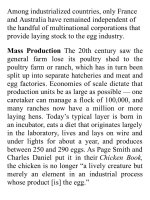On food and cooking the science and lore of the kitchen ( PDFDrive ) 810
Bạn đang xem bản rút gọn của tài liệu. Xem và tải ngay bản đầy đủ của tài liệu tại đây (165.77 KB, 2 trang )
Saffron Color Saffron’s intense color comes
from a set of carotenoid pigments (p. 267)
that account for 10% or more of the dried
spice’s weight. The most abundant form,
calledcrocin,isamolecularsandwichofone
pigment molecule with a sugar molecule
attached at each end. The sugars make the
normally oil-soluble pigment into a watersoluble one — and this is why saffron is
easily extracted in hot water or milk and
workssowellasacoloringagentforriceand
other nonfatty foods. Crocin is a powerful
colorant,andgivesanoticeabletingetowater
evenat1partpermillion.
The saffron crocus. Pure saffron consists of
thedriedstigmas,thedeepredtipsthatcatch
pollen grains and send them down the long
style to the ovary. Second-quality saffron
often includes the pale, relatively flavorless
styles.
SaffronFlavorSaffronflavorischaracterized
byanotablebitternessandapenetrating,haylike aroma. It arises largely from another
sugar-hydrocarbon combination, picrocrocin,
whichmaybeupto4%ofthefreshweightof
thestigmas,andisprobablyadefenseagainst
insects and other predators. The combination
itself is bitter. When the stigmas dry out and
their cell structures are damaged, both the
dryingheatandanenzymeactonpicrocrocin
toliberatethehydrocarbonportion,whichisa
volatile terpene called safranal. Drying the
saffron stigmas thus moderates the bitterness
and develops the aroma. Several chemical
relatives of safranal round out the overall
aroma.
Using Saffron Saffron is typically used in
smallquantities—afewthreads,ora“pinch”









